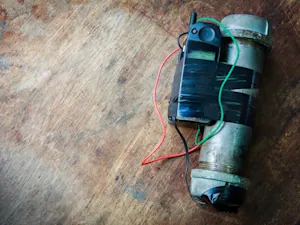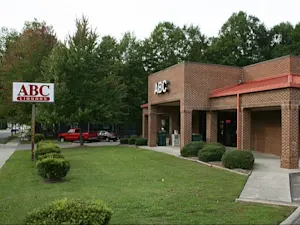
The Dirty Truth Behind the Siemens® Scandal
Picture this: Siemens®, the engineering giant once admired for its high-tech gadgets and rock-solid services, suddenly becomes the poster child for corruption. This isn't just a case of a company gone astray — it's the tale of one of the most elaborate, global bribery schemes ever seen. Beneath a polished surface lay a complex system of corruption, where bribery wasn't the exception — it was the strategy. So how did Siemens go from being a symbol of innovation to a symbol of greed? Here's how the story unfolded and what really went down behind its walls.
What Triggered the Investigation?
The first domino fell on Nov. 15, 2006, when German police raided the Siemens headquarters in Munich and other offices across the country. This wasn't a routine check. The authorities uncovered mountains of evidence suggesting that Siemens had engaged in widespread corruption for years. At first, Siemens played innocent, but their own internal audit soon revealed the ugly truth: Bribery wasn't a fluke — it was business as usual.
How Did the Bribery Work?
Let's break it down. Siemens didn't just pay the occasional bribe. They created an entire infrastructure to make corruption look like a regular expense. Here are some of the jaw-dropping tactics they used:
-
Cash Desks and Suitcases: Siemens employees would walk into designated cash desks, collect huge sums of money, and literally stuff it into suitcases. They then transported these suitcases across international borders to bribe officials, almost like a scene from a spy movie.
-
Post-it® Note Approvals: To keep things off the record, managers approved shady payments by scribbling authorization on Post-it notes. Once the money got transferred, they'd peel off the note, leaving no permanent paper trail. It was a masterclass in low-tech deception.
-
Slush Funds and Fake Accounts: Siemens didn't just slip cash under the table — they built entire systems of slush funds and off-the-books accounts. They hid these bribes under fake labels like "consulting fees" or "legal expenses," making the payments blend in with legitimate business costs.
Where Did the Money Go?
The scale of this bribery operation spanned continents. From Asia to Africa, and the Americas to Europe, no region escaped the reach of Siemens. They made at least 4,283 corrupt payments totaling about $1.4 billion. Here are a few of the most infamous examples:
-
Argentina: Siemens paid over $100 million in bribes to high-ranking officials, including two former presidents and cabinet members, all to secure a $1 billion contract for national identity cards. That's not just a bit of "greasing the wheels" — that's buying the whole machine.
-
Venezuela: The company shelled out at least $18.7 million to Venezuelan officials to gain favorable treatment on two major metro transit projects. Siemens didn't just want to win — they wanted to ensure no one else stood a chance.
-
Bangladesh: Siemens handed out more than $5.3 million to various Bangladeshi officials to tip the scales in their favor for a lucrative mobile telephone project. The aim? To shut out competitors and secure the contract, no matter the cost.
How Did Siemens Hide All This?
The brazenness of this level of corruption is hard to wrap your head around. Siemens created such an intricate web that it took years to unravel. They didn't just rely on the occasional envelope of cash — they used multiple layers of deception to throw off investigators. Slush funds? Check. Fake consulting agreements? You bet. They even paid out bribes through intermediaries, making it look like legitimate business expenses. For years, the company's accounting books reflected these bribes as routine "expenses," masking the truth from auditors, shareholders, and regulators alike.
What Happened Next?
Once the full scope of the corruption of Siemens emerged, the fallout hit hard. Authorities in Germany, the United States, and other countries launched full-scale investigations. The company faced a massive reckoning: fines totaling over $1.6 billion, including $800 million paid to U.S. authorities, marking the largest Foreign Corrupt Practices Act settlement at the time. The company's carefully constructed empire of bribery crumbled, forcing Siemens into a complete overhaul of its management and compliance systems.
Why Does This Scandal Matter?
This story shows how corruption can take root and thrive even in the most respected companies. It wasn't just a few bad apples — it was a culture that tolerated, and even rewarded, bribery. Employees knew about the corruption, but instead of speaking out, they followed along. The scandal forced Siemens to confront this reality and make drastic changes, but it also serves as a warning to other corporations.
For Siemens, the road to recovery required more than just fines and apologies — it required a complete culture shift.
References: Lessons from the massive Siemens corruption scandal one decade later | Siemens AG and Three Subsidiaries Plead Guilty to Foreign Corrupt Practices Act Violations and Agree to Pay $450 Million in Combined Criminal Fines | Siemens Bribery Scandal | SEC Charges Siemens AG for Engaging in Worldwide Bribery | SEC Charges Seven Former Siemens Executives with Bribing Leaders in Argentina | Trace Compendium | Siemens Agrees to Record-Setting $800 Million in FCPA Penalties























